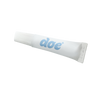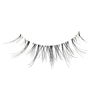The beauty in using zit stickers to help minimize and treat breakouts overnight is that there’s really nothing to it! You stick it on an oozy pimple and hit the hay, dreaming of sugarplum fairies and clear skin. You’ll wake up to the satisfaction of getting to peel the sticker off in all its oozy-gooey glory, revealing a minimized, gunk-free pimple already in its happy healing phase.
Maybe you’ve experimented with everything from hyaluronic acid and calendula oil to niacinamide and aloe vera, and that one stubborn zit just won’t go away—this is what you’ve been missing. These stickers shouldn’t be your primary attack on treating acne, but more of a backup plan when you’ve got a pimple that's gotten a little out of hand, and you’ve got a hot date or a spontaneous trip to New York City the next day. Keep reading for how to use zit stickers to treat your pimples the right way.
First of All, What Are Zit Stickers?
Zit stickers are a highly concentrated hydrocolloid sticker infused with active acne-fighting ingredients that target blemishes individually to bust out the gunk overnight. The best ones are formulated so that they’re safe for sensitive skin and they reduce the risk of discoloration and scarring. Let’s explain all the qualities in a good zit sticker.
- They are made of hydrocolloid: This is a special gelatin-like material that most zit stickers and blister bandages are made out of. It absorbs excess fluid like oil and pus and speeds up wound healing time.
- Packed with salicylic acid: A key ingredient in cleaning skin and unclogging pores, salicylic acid has anti-inflammatory and antibacterial properties that also work as an exfoliant to remove dead skin cells.
- Infused with tea tree oil: This natural ingredient that comes from the leaf of a tea tree is believed to be antibacterial and help treat acne.
For The Best Results With Zit Patches
While there is no real wrong way to use zit stickers, we’ll explain how and why you should use them in order to fight acne.
Wear Them Overnight
Zit dots are designed to sit on your pimple for a minimum of six hours—making them the best for overnight wear. Aside from being cute for bedtime and being strong and sticky enough to stay attached while you toss and turn, there’s another reason why you should wear them overnight. Your skin cells regenerate as you sleep!
Apply on a Clean Face
Always apply the sticker on freshly cleansed, dry skin. You can pop on your favorite headband and continue with your skincare regimen (we’re looking at you, moisturizer and vitamin C serum) after you’ve applied the sticker. Just be sure to try your best to avoid the sticker so it doesn’t slip or rub off.
Use Them on Active Zits
The prime time to use acne patches is when the pimple has come to a head with a bit of white pus present. When you cover up the pimple with the sticker once the zit already has a tiny opening, the hydrocolloid and other active ingredients can effectively make their way inside the zit and suck all the gunk out.
It’s Not for All Types of Acne: Not all acne comes to a head, so these spot treatments won’t always be useful. Cystic acne or hormonal acne tends to stay beneath the skin, and zit stickers won’t do much to help these types because they can’t penetrate the skin’s surface.
For these kinds of zits, you may need to look to other treatments like benzoyl peroxide or derivatives of vitamin A. Stick with treating whiteheads with a small but mighty patch.
Not for Blackheads: Blackheads are caused by dirt that gets underneath the skin and clogs the pore. That is why they are black! Hydrocolloid patches won’t help with these, and your best bet is to make sure you are cleansing your face nightly and exfoliating to remove dead skin cells.
Avoiding Picking
It can be hard to resist touching and picking at your pimples, but zit stickers make it easy to listen to your dermatologist's advice! After all, you can’t touch or pick if it’s covered up.
Popping: Squeezing and pushing on a pimple can actually push the bacteria and pus deeper into the skin, potentially causing more redness and swelling. A pimple is your body’s way of recognizing foreign bacteria and doing something about it.
When you pop a pimple, you are forcefully pushing the bacteria, oil, and debris out of your skin—causing an open wound instead of a pimple. Not only that, you are spreading that bacteria to the rest of your skin surrounding the pimple -- possibly causing more zits to pop up!
Picking: When you touch an already aggravated pimple, the bacteria and dirt on your hands and fingers spread to the zit. This can cause it to be even more swollen, red, and infected. Facial scars are very hard to get rid of once you have them. You can avoid them altogether by resisting to pick and covering your pimple up with a zit sticker instead.
Keep at the Ready
Since most zit stickers come in a large bunch, tear some off and put them in places so you’ll always have them handy and ready to use if a zit pops up unexpectedly (as they do). We recommend keeping some in your car for overnight road trips, in your makeup bag for whimsical slumber parties, and on your bedside table when you're too sleepy to walk over to your vanity.
In Conclusion
Zit stickers can be an effective, easy way to fight against pimples in your sleep. Not to mention, they are kind of fun, especially when you make them a part of your regular beauty regimen, along with your face masks and eye cream. They deliver medication, minimize appearance, and speed up healing time.
Just keep in mind they work best for individual pimples and only acne that has already come to a head. Pop on your adorable patches, and get ready to tell acne to peace out.
Sources:
How Hydrocolloid Bandages aka Pimple Patches Heal Acne | Allure
Salicylic acid for acne: Efficacy, how to use, and more | Medical News Today
How to Properly Exfoliate Your Face and Body for Radiant, Healthy Skin | Byrdie


